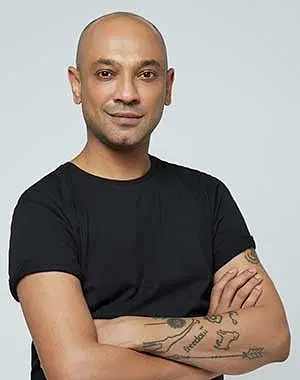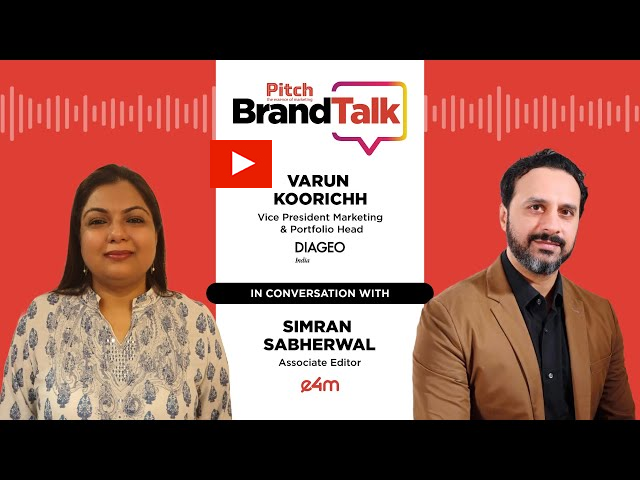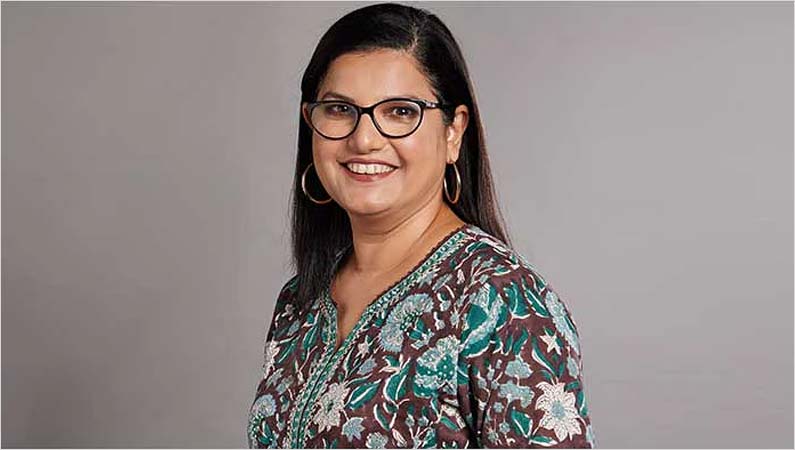e4m speaks to Umashan Naidoo, Head - Customer & Beauty, Westside - Trent Ltd., as part of ‘Moments Made By Marketing Series’ powered by Salesforce
exchange4media Group is curating a series of interviews called ‘Moments Made By Marketing Series’ powered by Salesforce where we focus on how brands are building connected experiences in a multi-platform environment to reach their consumers. In the second part of our series, Umashan Naidoo, Head - Customer & Beauty, Westside - Trent Limited, tells us why a brand should have its own point of view and communicate it consistently across channels.
He also highlights how the brand has segmented its customers into two lifestyle segments – contemporary and modern – and how all its in-house brands are mapped to these two based on pre-determined parameters.
He adds that once you have defined a customer moment, you can make the right decision on the product and move it to the consumer and also delight them at the same time. Naidoo also says that insights can be very debilitating because if you reference them too hard, then you might miss the opportunity of doing something totally new. He also highlights examples of how the brand leveraged data to delight and upsell new products to consumers.
Edited Excerpts
Being a retail brand, how do you create a hyper-personalized experience for consumers across platforms?
A big realization for us was that as a brand, we needed to have a point of view and recognize that our aim is to design and deliver an enhanced fashion brand. That’s our mantra. We recognized that month-on-month, we needed to have a centralized talking point that becomes the hook for our customer.
We then take the central talking point and share its relevance across our platforms – be it social media, in the store, online, or through our communications. Taking a 360-degree approach is key to enhance the brand. We communicate to the modern and contemporary urban India. So, for us, the starting point is always, “What is our point of view for the month and how do we communicate the point of view consistently through across channels?”
Can you elaborate on this further, a new messaging every month, what is the process?
We work on a 21-day cycle. In this period, we map out each and every post, banner points and communication for the 4-week the campaign, be it on Instagram or Facebook. Everything is planned including the SEO, the blogs, influencer content, etc.
We don’t use a creative agency. We create our own menu and all the creative work and conceptualization is done in-house. Though we collaborate and create content with partners, we own our content. It's important for retail to recognize that you cannot allow anyone to control your destiny, from a conversational point of view and clearly define the brand’s voice and tone.
When you are aware of the brand and point of view, you are also aware of what you want or don't want to put out. When you try to create and set behaviour, the first two years is all about the establishment of the brand. The consumer has to like the creative thought process and when the consumer experiences this over a period of time, they recognize the consistency and that’s the most important thing.
When a customer looks at an image or they hear a sound, they know it's Westside. When they read a copy, they know it is Westside without seeing the W.
As a retail player, how do you extract value from first-party data, and then create an experience for your consumer?
We have a database of 4 million people, who are part of the Clubwest program, of which about 2.8 million are active. Through their transactions and baskets, we can recognize what they opt-in for or not.
We talk about our customers in two lifestyle segments -- contemporary and modern, and our brands are mapped to these two segments. We've created a brand bible that talks about the attitude of our customers in these segments, i.e. a modern customer and a contemporary customer.
Based on their baskets and shopping behaviour, we've also defined what they will spend and what they are most likely to buy in summer and in winter. We then attach brands that we believe resonate with the modern customers as well as the contemporary customer.
This doesn't mean that a contemporary customer can’t cross over to modern contemporary and vice versa. It comes back to us having a point of view on our brands and defining it.
We also look at the results on a weekly basis and observe the shifts of the customer. If things do not go, as per our understanding, our first step is to send out a survey and recognise how consumers in that segment behaved and how many shifted their preference.
There have been significant shifts in consumer behaviour due to Covid-19. Customers recognize that they want to wear comfy clothes, loungewear and not formal clothes.
We’ve seen a lot of shifts and behaviours where the contemporary customer and the modern customer are shopping for similar products, such as loungewear because the product is right for the moment. Insights into customers are important because they help you recognize where you want to be and where you don't want to be.
Insights can also be very debilitating, because if you reference them too hard, then you might miss the opportunity of doing something totally new. It's a fine balance between art and science, recognizing what is going to be a huge trend, your point of view, and your lifestyle segment.
Hypothetically, if you define your contemporary customer as someone who is fashion savvy and always seeking Instagram-able moments, then your call to action will be newness, always offering the customer something new because that's what she's going to buy. Similarly, a modern customer is fashionable, comfortable in her own skin. When you've defined these moments, you're able to make the right decision on the product and move the product to the consumer and also delight them at the same time.
Everyone is talking about analytics. However, the key is what do you want to take out of the analytics? Do you want to do more of the same thing? Do you want to shift the customer's behaviour within that lifestyle or do you want to shift them to another lifestyle? Or do you want the customer to buy a new product altogether? Those are the moments that we are constantly grappling with and if you are in retail and not doing this all the time, then the brand will eventually fade out.
We're in a market where everyone believes you have to dangle a carrot or give a discount for an incredible sale. These strategies are gimmicky and not sustainable. If you've got great content, tell a story authentically, and your value proposition is being honest with your consumer then you will get a very good return on investment.
For instance, we did a very exciting experiment before Diwali, when we recognized that home was a huge trend. We went through our database and realised that there were customers in our modern lifestyle segment who were big customers in brands like Utsa and L.O.V. but had never shopped for homeware.
We sent out creatives of Westside Home to them and we got a conversion from this. We just sent them content that we believed would appeal to their lifestyle and the customer recognized this and came in and bought homeware.
What are the challenges in creating content?
When it comes to creating content, we believe in not dwelling in the past. We are in the game of fashion and want to tell a story about a modern Indian family and use fashion as the vehicle. As a brand we always tell the story from a female's perspective, the woman is the hero, a pioneer who’s always breaking rules and setting her own game plan. For example, for Valentine’s Day, we did a film about a little girl who was missing her friend, a little boy. Her parents make a concerted effort to take her to go see him and the girl rings the doorbell and gives her friend a cupcake for Valentine’s Day. The narrative was that Indian parents understand that relationships are healthy, natural and very normal.
The beauty of making content lies in conveying a message subtlety, that’s not in your face but can slightly shift society. We're not a brand that wants to make a statement. We want to nudge society to recognize the opportunities and to see the world through different coloured lenses.
As a brand, we make people feel stylish, attractive and being an inclusive brand our clothing is for everyone. In a lot of our campaigns, we use real people, including our staff. The more you get people who eat, breathe, speak the brand to showcase the brand, the more authentic the brand becomes, and the more relatable it becomes to an audience.
How do you leverage automation and technology to increasing efficiency?
Firstly, we do not bombard our customers with too much communication. We do a personalization campaign every week, where we target our Clubwest members, about 2.5 million customers, via SMS, and email and inform them of our new offerings.
At Trent, our model is different as we have new products in our stores every week. We have two launches in a month, a month-end launch which is a huge launch across 27 brands and then 15 days later we have a refresher on these brands in the middle of the month. The customer is always refreshed with newness and we never have anything on the shop floor for longer than 8 weeks. That is our strategy. We constantly communicate with the customer. Everything that we do has to be analyzed and has to have a return on investment.
Even on Facebook and Instagram, every single post is mapped. If a creative does not reach 2,500 likes in the first five hours or a video hasn't reached 10,000 likes in the first five hours, then something is wrong. If we don't get 250,000 to 300,000 interactions organically on our social media pages, then something has been wrong with the week’s attempt.
We also create creatives very close to posting, so within two or three days, our creatives are ready to go live. In terms of automation and engaging success, we've put a stake in the ground and the marketers know the numbers they have to achieve as their KPIs, KRAs is set against this.
In case the campaign is not working, how quickly do you change the content and the messaging to drive the point across?
Quite quickly. Hypothetically, if we post a byte video and realize in the first three hours that the response isn’t great, we would then quickly look at the opportunity to post stories because they get a lot of eyeballs and interactions very quickly.
On Instagram, we carry stories that will guide the person back to the video, or we will talk about something that the customer is more in tune to hear about. There are different opportunities for us to look at. Instagram is a very important tool for us because it's where we get to communicate with the customer who, we believe, loves our product. Instagram is mostly for our contemporary customer and Facebook for our modern customers. We also recognize the kind of content we want to put out on both channels.
How do you leverage data management platforms to gain insights and activate them to drive outcomes, both for marketing as well as product design?
We work with agencies and rely on them to mine data for us. We need to know how customers are behaving and we have digital conversations with customers where we ask a lot of questions. The questions could be: Where they plan to go on holiday? What did they buy on holiday? How much they spent? If they shopped online or offline?
Secondly, we gather insights from customers around a specific range of items or something that they're interested in. We have a digital focus group where we preview some of the products to customers and assess their feedback. Positive or negative, the feedback does not stop us from going forward with what we do but we do implement our plans with a bit more care.
We don't move away from the planned strategy as this is also based on a lot of global research. There is also a lot of gut and intuition which a merchant should have. Customer information and customer research have to be read and you have to draw out the sweet spot that enhances your process. You should not only take up everything that is being told to you blatantly. All of this is mapped back to our contemporary and modern lifestyle. We use two or three agencies that help us data mine all this.
This is a partner content article in association with exchange4media.











